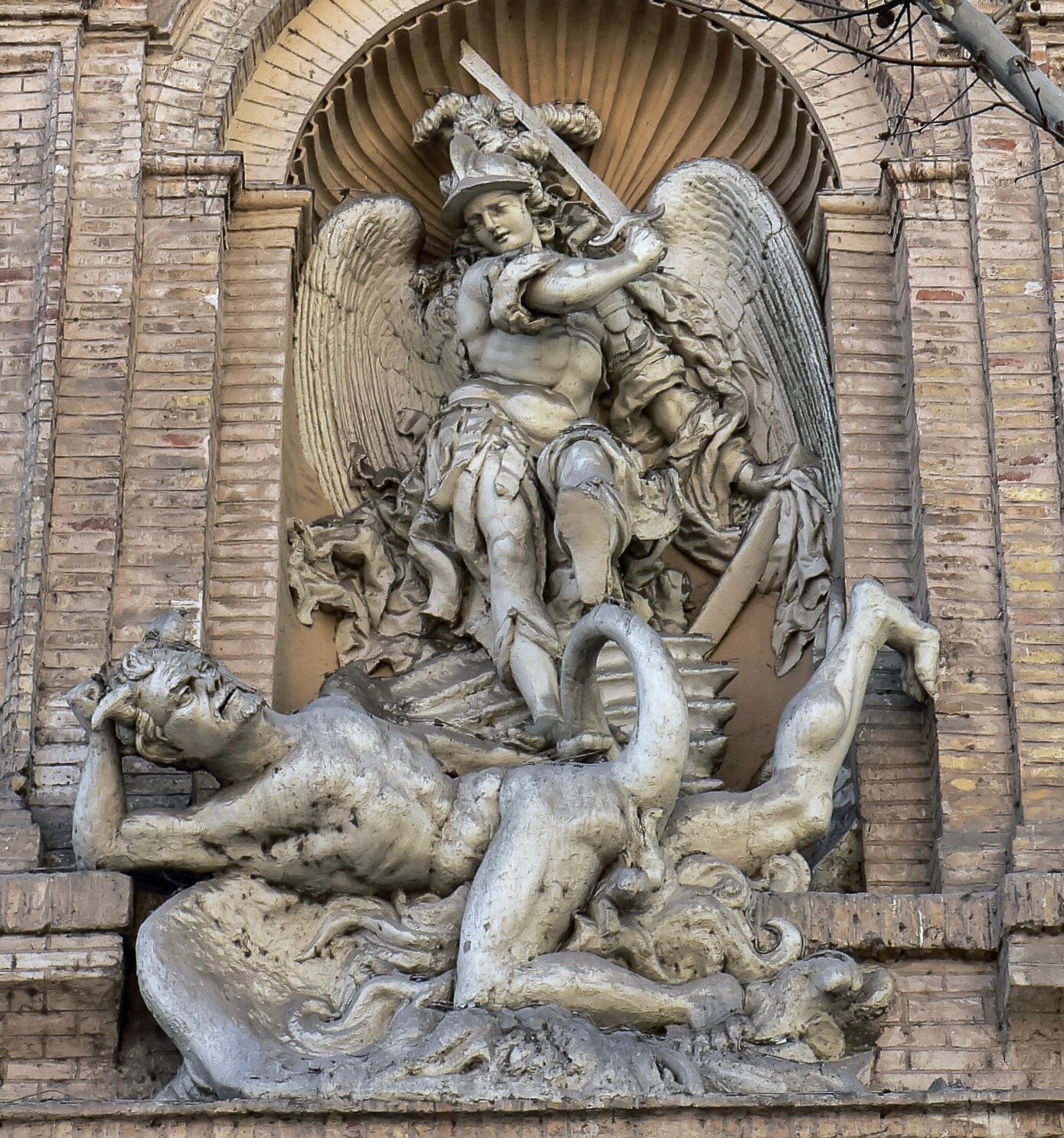The facade of Museo de Zaragoza in Aragon, Spain is adorned with three classical statues created by my great grandfather Carlos Palao (Image: Wiki)
ANTONIO PALAO Y MARCO: Statue of Juan Sebastián Elcano, Getaria 1861 (Image: Wiki)
It is often said that creative ability runs in the family. My own direct family lineage has several artists from the 19th-20th Century with great abilities: Carlos Palao (my great grandfather who was a sculptor), Antonio Palao (great great grandfather, also a sculptor) and Luis Palao (great granduncle, painter and illustrator.)
Their output included life-size and monumental classical statues, fine religious works, wistful plein air painting studies and colourful illustrations.
It’s really a thrill to know that all three enjoyed recognition in their time and that their artwork can still be seen and enjoyed today in public places in Spain.
ANTONIO PALAO Y MARCO: St Michael the Archangel defeating the Devil, Church of San Miguel de Navarro, Zaragoza (Image: Pinterest)
Antonio Palao (1824-1886) studied fine art in Valencia and Madrid, learning sculpture under the stewardship of José Piquer Duart. His work was of a Baroque style and many of his commissions featured several religious works for churches in Aragon, such as a large Baroque sculptured relief depicting Saint Michael the Archangel defeating the devil, placed above the doorway of San Miguel de los Navarros in Zaragoza. He was director of works at the magnificent Basílica del Pilar in Zaragoza, where he produced several interior chapel objects, such as the statue of Santiago.
Antonio also designed several statues of historical Spanish figures including Ramón Pignatelli (notable for overseeing construction of the Ebro canal) and the celebrated Spanish 18th Century explorer Juan Sebastián Elcano, which stands in the port at Getaria in the Basque region.
CARLOS PALAO Y ORTUBIA: Untitled landscape 1925 oil on card 15 x 21 cm (Image: catawiki)
Carlos Palao (1857-1934) was the son of Antonio. He followed in his father’s footsteps in continuing the Palao sculpture workshop, though his style reflected a neo-classicism and Renaissance form. He received several commissions over his lifetime, including restoration work, notably at the Basílica de Santa Engracia in Zaragoza, where he restored several 16th Century statues in a highly resplendent portico above the basilica’s main entrance. Many of the original statues had been destroyed during the Peninsula War in 1809, and Antonio repaired several of these including depictions of Saint John and the Virgin Mary at the Crucifixion, and adding new figures such as Saints Augustine, Gregory, and Ambrose.
Amongst Carlos’ other works was an impressive set of classical statues of female allegorical symbols representing Architecture, Sculpture and Painting (see image at the top of the page), completed in 1908, and placed in prominent position on the facade of the Museo de Zaragoza (he became director there in 1916.)
He also tried his hand at painting. Above is an example of a oil painting that he made towards the end of his life, showing a restful plein air landscape. I find his woodland scenes really touching because they remind me of when I used to paint in my local woods, striving to capture the serenity of trees and streaks of sunlight in a simple and uncomplicated way.
LUIS PALAO Y ORTUBIA: Gloria 1901 oil on board, 130 x 90 cm (Image: Museus d’Olot)
Luis Palao (1863-1933) was Carlos’ brother. Unlike Carlos and Antonio, Luis focused primarily on painting and illustration. He produced images for several publications, including children’s books and historical works, magazine illustrations, contemporary posters and also a design for a set of Fournier playing cards. He received an award for a poster entitled ‘Gloria’ that he entered in a competition for a cigarette brand (the artwork is in the collection of the Garrotxa Museum in Olot, Catalonia.)
According to an encyclopaedia entry, Luis Palao might have emigrated to Argentina before the Spanish Civil War.
In compiling this blog post I went from previously having only sparse anecdotal knowledge about my artistic ancestors to receiving a cornucopia of incredible information about their lives and the creative output that they made. It makes me feel proud to be part of such a heritage and inspires me greatly in wanting to add to their legacy.
Carlos Palao as a young man and his house on Paseo de Sagasta, Zaragoza. He commissioned architect Félix Navarro Pérez to design it, completed in 1912. (House photo: elviajedelalibelula)





